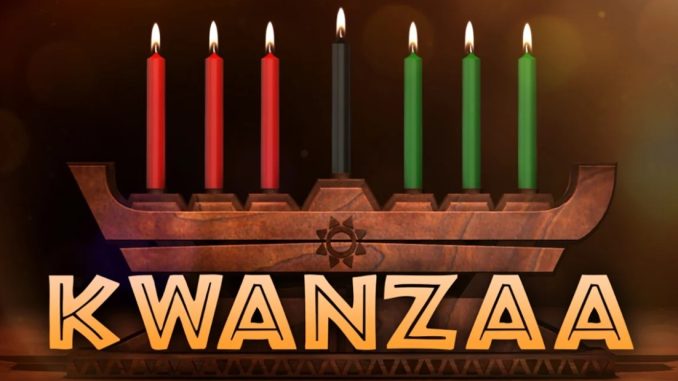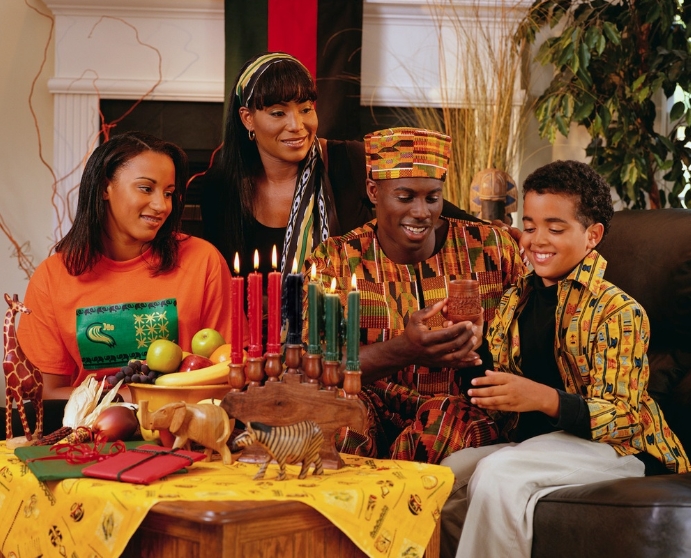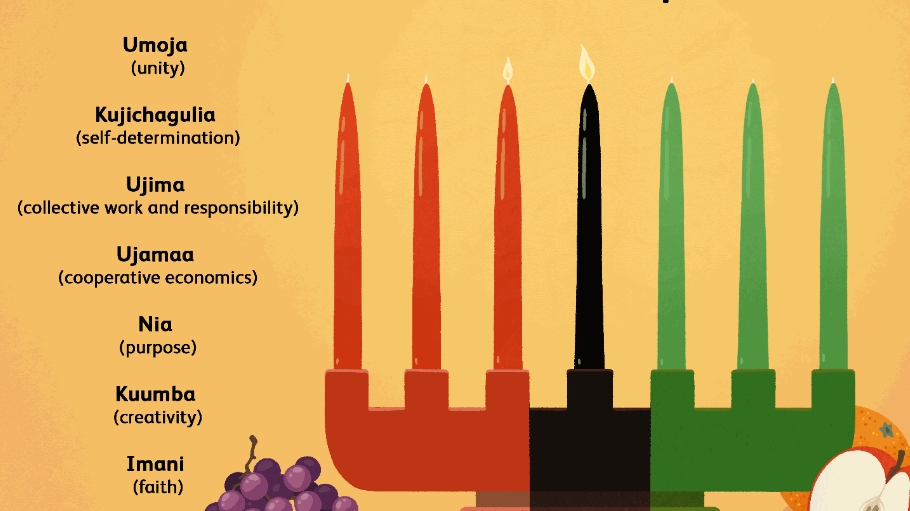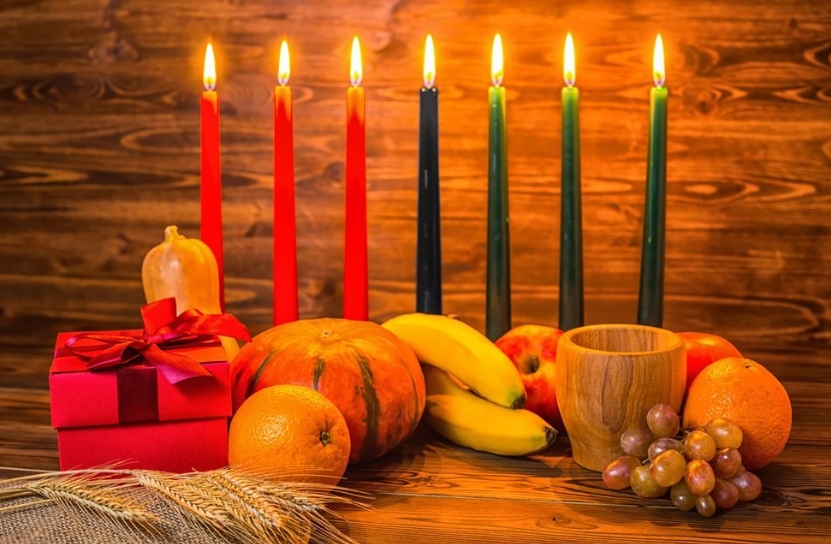
Kwanzaa is an African-American cultural festival that is held from December 26 to January 1. Celebrations begin the day after Christmas and last for seven days. Each day is steeped in symbolism and ceremony. Celebrants begin by decorating a table with a straw mat that symbolizes the traditions at the heart of the holiday’s foundation. The week-long holiday celebrates family, culture, community, and the harvest. The word “Kwanzaa” itself comes from the Kiswahili phrase matunda ya kwanza, meaning “first fruits [of the harvest]”. Kwanzaa is not a religious holiday, and families who celebrate Kwanzaa often celebrate it in addition to Christmas, Hanukkah, or another religious holiday.
How many days Kwanzaa is celebrated?
Kwanzaa is celebrated for seven days. Every year, people around the world celebrate African-American history and culture which lasts from December 26 to January 1. This year, Kwanzaa started on December 26, 2022 (Monday) and will end on January 1, 2023 (Sunday).

Kwanzaa is a week-long holiday held annually from December 26 to January 1. Kwanzaa uses the East African language, Swahili.
Kwanzaa Feast
The Kwanzaa Feast, also known as Karamu, is a feast that typically takes place on December 31, the sixth day of the Kwanzaa period. The feast is also called A Karamu Ya Imani (Feast of Faith). The Karamu feast was developed in Chicago during a 1971 citywide movement of Pan-African organizations. The initial Karamu Ya Imani occurred on January 1, 1973, at a 200-person gathering at the Ridgeland club, followed by the airing of grievances and feats of strength. The celebration includes the following practices:
- Kukaribisha (Welcoming)
- Kuumba (Remembering)
- Kuchunguza Tena Na Kutoa Ahadi Tena (Reassessment and Recommitment)
- Kushangilia (Rejoicing)
- Tamshi la Tambiko (Libation Statement)
- Tamshi la Tutaonana (The Farewell Statement)
How many people celebrated Kwanzaa?
According to National Geographic, 12.5 million Americans primarily celebrate Kwanzaa during the holiday season. A 2015 survey found that 1.9% of those polled planned to celebrate Kwanzaa – about six million people in the United States.
Kwanzaa was created for and is celebrated by Black Americans. Kwanzaa is primarily an African American holiday, it has also come to be celebrated outside the United States, particularly in the Caribbean and other countries where there are large numbers of descendants of Africans. It is also celebrated by Black people in Canada and the Caribbean.
What religion is Kwanzaa?
Kwanzaa isn’t tied to a single religion. It includes people of all religions, so people who observe Christmas or Hanukkah can also celebrate it. Africans of all faiths can and do celebrate Kwanzaa, i.e. Muslims, Christians, Black Hebrews, Jews, Buddhists, Baha’i, and Hindus, as well as those who follow the ancient traditions of Maat, Yoruba, Ashanti, Dogon, etc.
Kwanzaa History
Coming to the history of Kwanzaa, American Maulana Karenga created Kwanzaa in the year 1966 during the aftermath of the Watts riots as a specifically African-American holiday. The main aim of the creator of the festival was to “give blacks an alternative to the existing holiday of Christmas and give blacks an opportunity to celebrate themselves and their history, rather than simply imitate the practice of the dominant society”.
As per Karenga, the name Kwanzaa derives from the Swahili phrase matunda ya kwanza, which means “first fruits”. Later, it was decided to spell the holiday’s name with an additional “a” so that it would have a symbolic seven letters. The festival “first fruits” initially exist in Southern Africa that is celebrated in December/January with the southern solstice.
During the early years of Kwanzaa, Karenga said it was meant to be an alternative to Christmas.
Seven Principles of Kwanzaa
The seven principles of Kwanzaa or Nguzo Saba/Nguzu Saba was developed in 1965, a year before Kwanzaa itself. These seven principles are all Swahili words. The seven principles of Kwanzaa are:
- Umoja (Unity): To strive for and to maintain unity in the family, community, nation, and race.
- Kujichagulia (Self-determination): To define and name ourselves, as well as to create and speak for ourselves.
- Ujima (Collective work and responsibility): To build and maintain our community together and make our brothers’ and sisters’ problems our problems and solve them together.
- Ujamaa (Cooperative economics): To build and maintain our own stores, shops, and other businesses and to profit from them together.
- Nia (Purpose): To make our collective vocation the building and developing of our community in order to restore our people to their traditional greatness.
- Kuumba (Creativity): To do always as much as we can, in the way we can, in order to leave our community more beautiful and beneficial than we inherited it.
- Imani (Faith): To believe with all our hearts in our people, our parents, our teachers, our leaders, and the righteousness and victory of our struggle.

There also are seven symbols of the holiday: fruits, vegetables, and nuts; a straw mat; a candleholder; ears of corn (maize); gifts; a communal cup signifying unity; and seven candles in the African colors of red, green, and black, symbolizing the seven principles.
Fun Facts About Kwanzaa
Here are some fun facts about the festival, Kwanzaa.
- Kwanzaa was created in the 1960s. Maulana Karenga, a Black nationalist who later became a college professor, created Kwanzaa as a way of uniting and empowering the African American community in the aftermath of the deadly Watts Rebellion.
- Kwanzaa is not a religious holiday, but a cultural one with an inherent spiritual quality. Africans of all faiths can and do celebrate Kwanzaa, i.e. Muslims, Christians, Black Hebrews, Jews, Buddhists, Baha’i, and Hindus, as well as those who follow the ancient traditions of Maat, Yoruba, Ashanti, Dogon, etc. As per Karenga, non-Black people can also enjoy Kwanzaa.
- Former president Barack Obama and his wife, Michelle, issued a statement in 2011 “to all those celebrating Kwanzaa”. “We know that there are still too many Americans going through enormous challenges and trying to make ends meet” the president said. Likewise, Presidents Bill Clinton and George W. Bush released similar statements during their time in office.
- On the last day of Kwanzaa, gifts are handed out to family members which are often homemade.
- There’s an official book “Dr. Karenga’s Kwanzaa: A Celebration of Family, Community, and Culture” for how to celebrate Kwanzaa, as well as a website entitled “officialkwanzaawebsite.org”.
- Kwanzaa is a weeklong celebration of African heritage and culture in the African-American community in the United States that is celebrated from December 26 to January 1 each year. A Karamu, an African feast, is held on Dec. 31.
- The seven principles include: unity (umoja), self-determination (kujichagulia), collective work and responsibility (ujima), cooperative economics (ujamaa), purpose (nia), creativity (kuumba) and faith (imani).
- Kwanzaa also has seven symbols–mazao (crops), mkeka (mat), kinara (candleholder), muhindi (corn), kikombe cha umoja (unity cup), zawadi (gifts) and mishumaa saba (seven candles)–that are traditionally arranged on a table. Three of the seven candles are red, representing the struggle; three of the candles are green, representing the land and hope for the future; and one of the candles is black, representing people of African descent.
- The first US postage stamp commemorating Kwanzaa was issued in 1997.
- Kwanzaa-which is derived from the word “first” in Swahili—takes inspiration from the start of the harvest season in Africa when the first crops are gathered.
What is a Kwanzaa candle called?
Kwanzaa candle is called “The kinara” which is a seven-branched candleholder used in Kwanzaa celebrations in the United States. The word kinara is a Swahili word that means candle holder. During the week-long celebration of Kwanzaa, seven candles are placed in the kinara—three red on the left, three green on the right, and a single black candle in the center. Red, green, and black are the symbolic colors of the holiday. During the week of Kwanzaa, a new candle is lit on the kinara each day. The center black candle is lit first, and the lighting then proceeds from left to right. The black one symbolizes the African people, the red their struggle, and the green the future and hope that comes from their struggle.
Kwanzaa Candle Meaning
At the time of Kwanzaa, seven candles are placed in “The Kinara”. Three red candles are on the left, three green candles are on the right, and a single black candle is in the center. The black candle symbolizes the people themselves, the three red candles are for the struggle or bloodshed in the past, and the three green candles represent the Earth or the abundance of possibilities the future holds.

Kwanzaa Symbols
The symbols of Kwanzaa are the seven candles (Mishumaa Sabaa), which represent the seven principles (more on that below), the candle holder (Kinara), unity cup (Kikombe cha Umoja), placemat (Mkeka), crops (Mazao), corn (Muhindi), and gifts (Zawadi).
Kwanzaa Foods
Kwanzaa lasts seven days – starting on December 26 and ending on January 1 and the largest meal is eaten on the sixth night. Some of the Kwanzaa foods include Fry Bake & Saltfish Salad, Callaloo, Black Cake Cookies, Alton Brown’s Shrimp Gumbo, Vegan Hoppin’ John, Ginger-Coconut Macaroons, Saffron-Scented Vegetable Couscous With North African-Spiced Halibut, Classic Nigerian Jollof Rice, Rum Glazed Coconut Bread Pudding, Anytime Jambalaya, Shrimp & Sausage Creole, Jamaican Jerk Roast Chicken With Fried Plantains, Plantains Foster, Flaky Buttermilk Biscuits From Carla Hall, Collard Greens Braised In Coconut Milk, Spicy Oven-Roasted Okra, Skillet Cornbread, and Sweet Potato Pie among others.
Leave a Reply